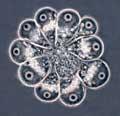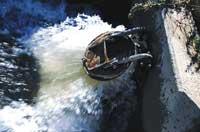The highest diversity
2010/06/01 Lakar Iraizoz, Oihane - Elhuyar Zientzia Iturria: Elhuyar aldizkaria
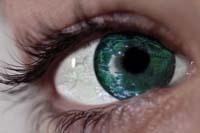
Recently, the media has published the discovery of a microbial mantle of the size of Greece off the Chilean and Peruvian coasts. Experts begin to say that it is formation with the highest concentration of living beings in the world. It is one of the discoveries made in a great project called Census of Living Marines. About 300 scientists are participating in the project and in October, after the census is over, more than 300 expeditions will be made.
One of the four projects put in place for the elaboration of a full census aims to know the marine microorganisms, while the other three will study the ecosystems of deep waters, the abyss life and the zooplankton. Of course, great discoveries have been made in all projects, but the expert involved in the elaboration of the microbial census, Mitch Sogin, of the Marine Biological Laboratory of the United States, has stated that "the magnitude of the findings in other fields is not comparable to that of the microbial study".
In fact, our knowledge of microorganisms is very small. As noted by Linda Amaral-Zettler, one of the leaders of the microbes study project, "we are still in a phase of discovery regarding microbial biodiversity." This is not exclusive to marine microorganisms. The Service of Bio Intelligence of the European Union published in February a report stating that we only know 1% of the bacteria on earth.
The truth is that you cannot know exactly what that percentage is, since it is not yet known how many species there are of everything, but when analyzing a certain community, experts have discovered that, in the best of cases, only 1% of the total of the existing ones were known, that they could only grow in pure crops for their study in depth.
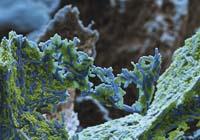
Microorganisms have been found in all Earth's ecosystems studied and many more microorganisms have always been found than expected. Therefore, it is not possible to make reliable estimates. It is estimated that there are several tens of millions and a billion species of bacteria on Earth. The existence of this difference "reveals what ignorance we are about microorganisms", says Carles Pedrós-Alió, professor, researcher and expert in microorganisms of the Institute of Sea Sciences of Barcelona of the CSIC.
Definition of species, molecular
Knowing the number of species is not a challenge. In fact, microorganisms escape the traditional definition of the species. According to this definition, the crossing of two living beings together gives rise to reproductive events of the same species. Bacteria, for example, reproduce asexually. "It is a concept of the species still unsolved," explains Emilio Casamayor, microbiologist of the Department of Continental Ecology of the Center for Advanced Studies of the CSIC of Blanes.
On the other hand, in the macroscopic live are usually based on morphological characteristics for the separation of species. In the case of microorganisms, however, when looking at the microscope "you only see sausages, croquettes and balls", explains Pedrós-Alió. Therefore, morphological characteristics do not serve to define species.
Thus, the ecologists, microbiologists, taxonomists and phylogenetists who study microbes have had to resort to molecular techniques in search of the differences between the different species, according to their genetic proximity.
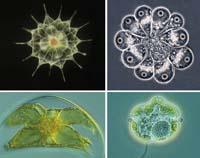
Bar is used, for example, the sequence of the ribosomal RNA 16S, the sequence of one of the components of the ribosomes. Since ribosomes have the function of synthesizing proteins, they appear in each and every living thing, so these sequences of RNA are very useful to perform comparisons. In the case of ribosomal RNA 16S, two individuals must have in common 97% of this sequence to be considered one of the same species.
"We have seen that with this definition we greatly undermine the existing real diversity --Pedrós-Aliók-matizes -. There are bacteria that have 99% of this sequence of RNA exactly the same and, by analyzing it more specifically, we have realized that they should be different species". However, experts have decided not to modify this percentage to avoid overestimation.
Well, by contempt, they have seen that they have been able to identify many species that so far could not identify. "Until 20 years ago the knowledge we had of microorganisms was only a small window of what really exists," explains Casamayor. In fact, before molecular techniques, microorganisms were grown in culture plates, that is, in very rich means of food, at unusual temperatures in nature... "And microorganisms are accustomed to more severe conditions," says Casamayorr-, for example, to unhealthy environments, so in very edible areas many do not grow."
Discovering ecosystems at the microorganism level
Sequencing the genomes of microorganisms and establishing comparisons between sequences not only serves for taxonomy, that is, to produce lists of species and classifications. It is also of great utility for ecologists in microbiology to carry out studies at ecosystem level: analysis of species distribution, study of the speciation process, knowledge of the richness of species of ecosystems, etc. Among other things, it analyzes whether their knowledge at a macroscopic level on ecosystems coincides with a microorganism level.
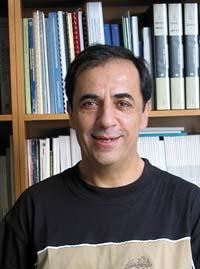
And the results that are being obtained are not always affirmative. For example, in terms of biodiversity, on Earth we have defined rich and poor biomes. The tropical forests are considered one of the places with the greatest biodiversity and deserts one of the poorest. Or in the sea, for example, the diversity of species is greater in shallow areas than in great depths.
In 2006, two researchers from the University of Duke and the University of Colorado, in an article published in the magazine PNAS on line, pointed out that the Amazon is a desert in terms of diversity of bacteria and the desert is the Amazon. Quite the opposite of the observed at macroscopic level. In Casamayor's opinion, "it is too daring" to make this kind of resounding expressions, since it can be questioned if the observed is a general model or something found in certain conditions. We should clarify what is the scale to be considered for the sampling in the microscopic world.
However, it is not the only study that has proposed this type of biodiversity distribution. In the group of Carles Pedrós-Alió this fact is being studied in the Mediterranean, and their research has revealed that diversity increases with depth. Not the number of bacteria, which is about ten times less than 2,000-3,000 meters from the surface of the sea -- on the surface is about one million specimens per milliliter -- but increases the number of species: "We are seeing that the poorest communities in the number of individuals are richer in diversity," says Pedrós-Aliók--. But we still do not know if the distribution of biodiversity in general follows this model."
All everywhere?
A proverb from the 1920s said that all microorganisms are everywhere and that the medium determines what they will go forward. Casamayor has illustrated this idea with an example: "If we take a culture medium for marine bacteria and put it at a height of 2,000 meters, scientists saw that marine bacteria grow in that medium."
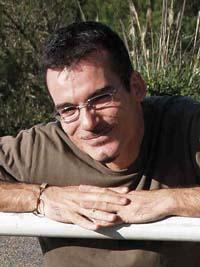
However, several research groups, such as Casamayorrenea, are finding evidence that questions this idea. It is true that microorganisms are easily dispersed as they can move in water, in the air, glued to dust particles, on birds or within them. But researchers have also begun to observe the island effect on bacterial communities. In the Casamayor group, for example, an exhaustive study of the microorganisms of marine and terrestrial lagoons has been carried out, and it has been observed that in the lagoons some populations of microorganisms are isolated and have difficulties to access other lagoons with similar conditions.
In addition, they have seen that oceanic communities have a higher degree of kinship, that is, they are more similar. These two discoveries suggest that in the lakes the expression "all are everywhere" is not met, so an island effect should not occur between lagoons of similar conditions. In addition, a lower degree of kinship implies that among the communities of microorganisms present in the lakes there is not much gene exchange, so their dispersal capacity is limited, since not all arrive at all.
However, Casamayor wanted to make it clear that the proposal is nothing more than a working hypothesis: "This research is one of the first steps in the search for standards or limitations for the organization of microorganisms in communities and has opened new lines of research."
The biosphere of the rare
Regardless of the dispersion strategies and the diversity of microorganisms existing in a given region, there can be identification methods that limit knowledge. In fact, there are some that are in a very small proportion in the population, and in the techniques that we have to identify them it is essential to be in a certain amount. If not, they are invisible.

There are few microorganisms in low density. These microorganisms are known to experts as the biosphere of the rare. The environmental conditions at the time are in low density because they are not adequate for them, but they are a seed bank that allows microbial communities to have a great capacity of adaptation that is usually observed. "During the Prestige spills we were able to show, for example, that in the water there were bacteria that fed from oil. There is enormous potential hidden in these groups of low-density bacteria, waiting for the conditions of the medium to change," says Pedrós-Alió.
As the bacteria reproduce asexually, it is enough that in a population there is only one specimen for the species to advance. In addition, they have their own mechanisms to "play" with the genome (duplicate genes, perform translocations, mutate, etc.) They carry out constant adaptation tests. And, as they double very quickly, they diversify a lot in very little time. For example, in a population that comes from a single specimen, it can be observed that the population generated at two months of beginning to double uses other sugars in the bacteria, reproduces at another speed, etc.
In general, "we have before our eyes a world that we cannot see, we have just become aware of its importance, it is wonderful", said Pedrós-Alió.
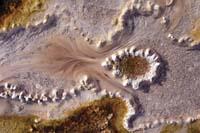

Gai honi buruzko eduki gehiago
Elhuyarrek garatutako teknologia




